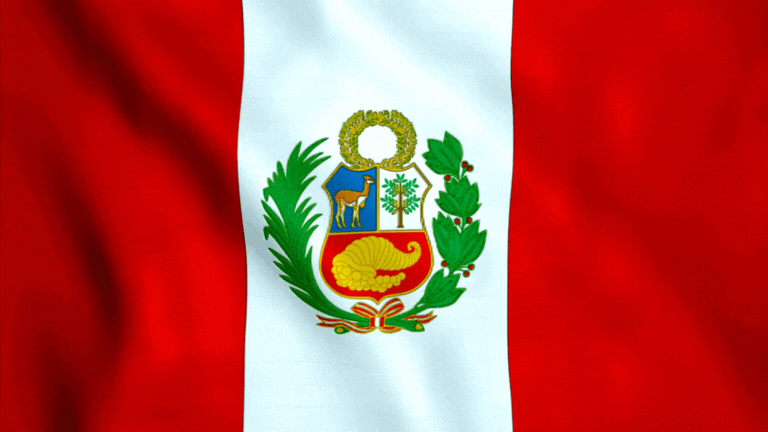Please be aware that this article may contain links to products and services we recommend. If you click on any of these links, we may earn a commission at no extra cost to you. We only endorse products and services that we believe will add value to our readers. Learn more here.
Peru Flag: History & Symbolism
Hack The Quiz
7/4/20242 min read
This article explores the history and symbolism of the Peru flag, highlighting Peru’s location in South America and explaining how the flag’s design represents the country’s independence, rich history, and natural beauty.
Where is Peru?
Peru is located in western South America, bordered by Ecuador and Colombia to the north, Brazil to the east, Bolivia and Chile to the south, and the Pacific Ocean to the west. Known for its diverse geography, including the Andes mountains, the Amazon rainforest, and the coastal desert, Peru is also home to ancient civilizations such as the Inca, whose capital was located in Machu Picchu.
Peru declared its independence from Spain on July 28, 1821, under the leadership of José de San Martín. The national flag, adopted the same year, symbolizes the country’s fight for independence and the rich history of its people.
The History of the Peru Flag
The current flag of Peru was officially adopted on February 25, 1825, but the original design was created by José de San Martín in 1820. The flag’s red and white colors were chosen to represent the ideals of bravery, peace, and unity, reflecting the courage of those who fought for independence from Spain.
While the basic red-and-white design has remained consistent, the flag underwent a few modifications before settling on its present form in 1825. The national coat of arms was added to the center of the state flag, representing Peru’s natural resources and its enduring strength.
Breaking Down the Peru Flag’s Design
The Peruvian flag consists of three vertical stripes—two red stripes on the sides and one white stripe in the middle. The state version of the flag features the national coat of arms in the center of the white stripe. Each element of the flag carries important symbolic meaning tied to Peru’s history, ideals, and geography.
Let’s break down the elements of the flag:
The Red Stripes
The two red stripes on the sides of the flag symbolize the blood shed by Peru’s patriots in their fight for independence. Red represents the bravery and sacrifice of the Peruvian people during their struggle for freedom.
The White Stripe
The white stripe in the middle symbolizes peace, purity, and social justice. It reflects the country’s aspirations for unity and harmony among its people.
The Code of Arms (State Flag)
The coat of arms at the center of the state flag includes three key symbols. The Vicuña, a native animal, represents Peru’s rich wildlife. The Cinchona tree represents the country’s natural resources, particularly quinine, a medicine derived from the tree. Lastly, the Cornucopia overflowing with gold coins symbolizes the country’s mineral wealth. Together, these symbols reflect Peru’s abundant natural resources and its proud heritage.
Final Thoughts
The flag of Peru is a meaningful symbol of the country’s independence, natural beauty, and strength. The red and white colors represent both the sacrifice of Peru’s heroes and the peace the nation seeks to uphold, while the coat of arms highlights its rich resources and heritage.
Since its adoption in 1825, the flag has been a source of national pride, flown during important celebrations such as Independence Day on July 28 and at international events. It serves as a reminder of Peru’s rich history, its natural wealth, and its ongoing commitment to unity and progress.
Expand your mind ...
Explore trivia that broadens your understanding and knowledge of the world.
WE ARE HERE FOR YOU
JOIN US and hack the quiz
info@hackthequiz.com
© 2024. All rights reserved.



